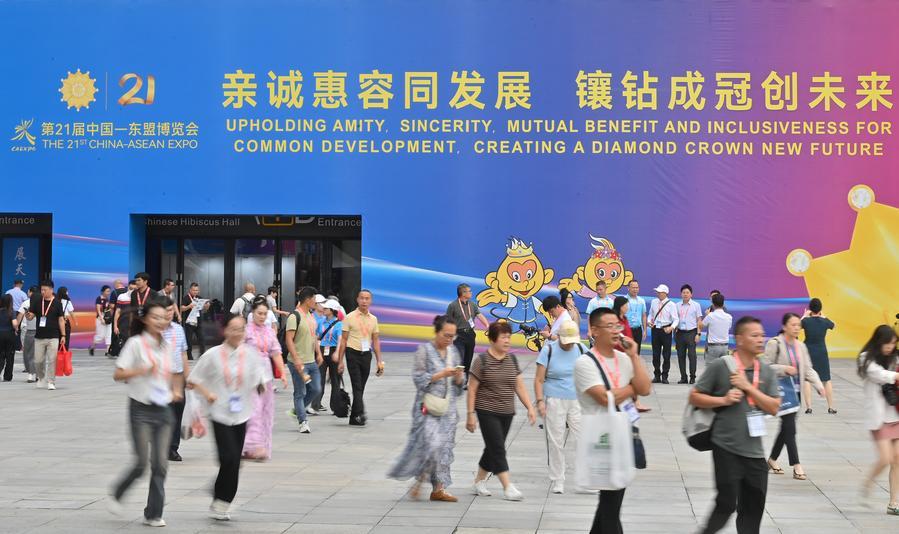* Since its launch in 2021, the China-Laos Railway has witnessed thriving passenger and freight transportation, with the number of passengers and total cargo volume increasing year by year. Traveling long distances by the China-Laos Railway has become part of daily life for the Lao people.
* In Thailand, the Thai-Chinese Rayong industrial zone has become a significant hub for Chinese manufacturing enterprises investing in Thailand and the Southeast Asian region.
* China would like to join forces with ASEAN to seize the opportunities of the new round of technological revolution and industrial transformation, said the Chinese premier at the 27th China-ASEAN Summit, highlighting cooperation potential in such areas as digital economy and green development.
VIENTIANE, Oct. 11 (Xinhua) -- With nearly a quarter of the world's population, China and the Association of Southeast Asian Nations (ASEAN) hold immense market potential, serving as a significant advantage for economic development amid the sluggish global recovery.
A new milestone in China-ASEAN cooperation was marked by Chinese Premier Li Qiang's announcement at the 27th China-ASEAN Summit on Thursday regarding the substantial conclusion of the Version 3.0 China-ASEAN Free Trade Area upgrade negotiations.
The announcement is anticipated to pave the way for the joint development of a hyper-scale market, uncover cooperation opportunities in areas such as the digital economy and green development, and drive the integration of East Asian economies.
As the Chinese premier said, China-ASEAN relations have developed beyond the bilateral scope with far-reaching significance for Asia and having a global impact.
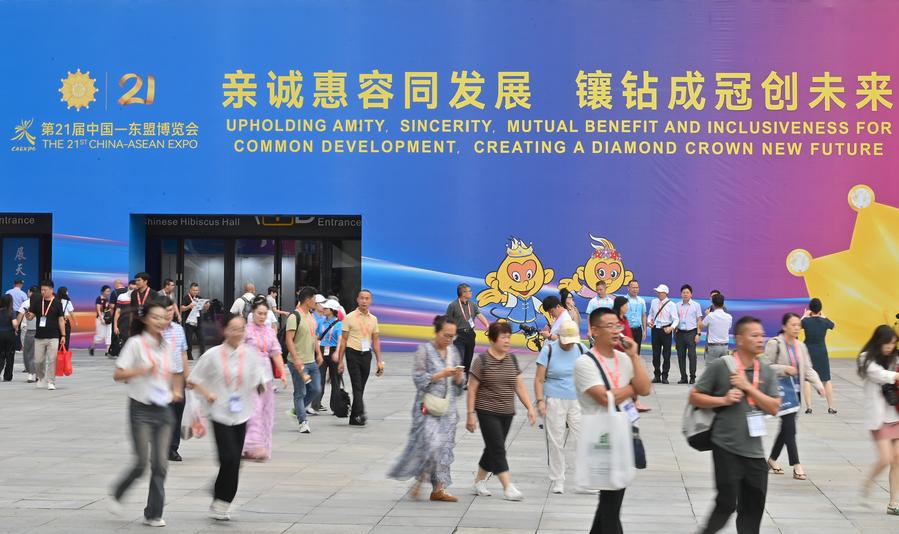 This photo shows a view of Nanning International Convention and Exhibition Center, where the 21st China-ASEAN Expo and the China-ASEAN Business and Investment Summit was held, in Nanning, south China's Guangxi Zhuang Autonomous Region, Sept. 24, 2024. (Xinhua/Huang Xiaobang)
This photo shows a view of Nanning International Convention and Exhibition Center, where the 21st China-ASEAN Expo and the China-ASEAN Business and Investment Summit was held, in Nanning, south China's Guangxi Zhuang Autonomous Region, Sept. 24, 2024. (Xinhua/Huang Xiaobang)
STRENGTHENING CONNECTION
Since its launch in 2021, the China-Laos Railway has witnessed thriving passenger and freight transportation, with the number of passengers and total cargo volume increasing year by year. Traveling long distances by the China-Laos Railway has become part of daily life for the Lao people.
Amidst the severe flooding last month in the northern provinces of Laos, the railway became the only major public transportation system capable of reaching disaster-stricken areas, ensuring smooth traffic and timely assistance.
The completion of the China-Laos Railway has become one of the benchmark projects for economic cooperation between China and Southeast Asia. Elsewhere, China's efforts are also visible in helping other Global South countries enhance connectivity.
In Indonesia, the Jakarta-Bandung High-Speed Railway has transported 5 million passengers and provided services to 250,000 passengers from 157 countries and regions as of August. Numerous modern airports and ports in the region have significantly enhanced transportation capacity, injecting new vitality into economic development.
According to an estimate by the World Bank, the transport projects under the Belt and Road Initiative (BRI) could reduce travel times along economic corridors by 12 percent, increase trade between 2.7 percent and 9.7 percent, increase income by up to 3.4 percent and lift 7.6 million people out of extreme poverty.
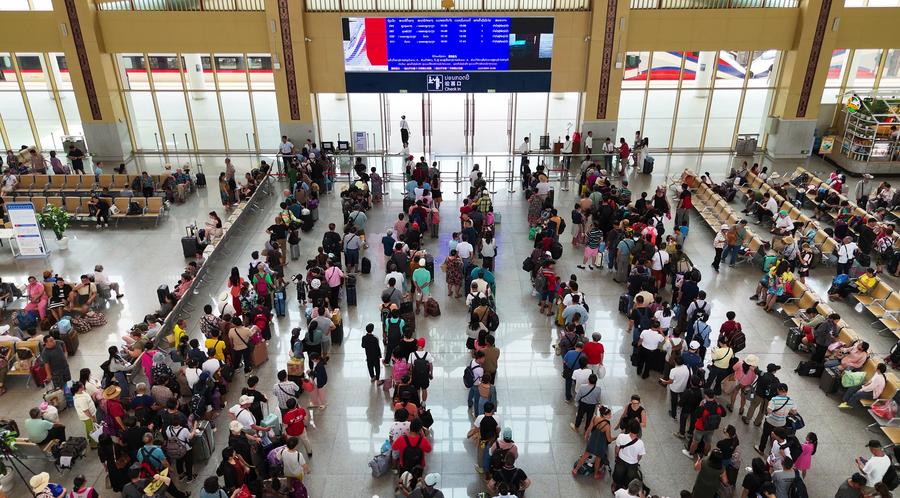 An aerial drone photo taken on April 12, 2024 shows passengers at the Vientiane Station of the China-Laos Railway in Vientiane, Laos. (Photo by Yang Yongquan/Xinhua)
An aerial drone photo taken on April 12, 2024 shows passengers at the Vientiane Station of the China-Laos Railway in Vientiane, Laos. (Photo by Yang Yongquan/Xinhua)
FORGING RESILIENCE
In Thailand, the Thai-Chinese Rayong industrial zone has become a significant hub for Chinese manufacturing enterprises investing in Thailand and the Southeast Asian region.
It has attracted Chinese enterprises to get involved in various sectors including automotive and motorcycle parts, new energy, smart home appliances, and mechanical and electronic industries. The industrial park has generated employment opportunities for more than 70,000 people.
Zhao Bin, president of the Thai-Chinese Rayong Industrial Realty Development Co., operator of the industrial zone, said the park has attracted some industry-leading Chinese companies to invest in Thailand.
 Passengers pose for photos with a model of a high-speed electrical multiple unit (EMU) train of the Jakarta-Bandung high-speed railway at the waiting hall of Halim Station in Jakarta, Indonesia, June 17, 2024. (Xinhua/Xu Qin)
Passengers pose for photos with a model of a high-speed electrical multiple unit (EMU) train of the Jakarta-Bandung high-speed railway at the waiting hall of Halim Station in Jakarta, Indonesia, June 17, 2024. (Xinhua/Xu Qin)
This influx has helped Thailand build a relatively complete industrial chain, Zhao said, adding that the investments from Chinese enterprises have facilitated the restructuring of supply chains and enhanced regional industrial cooperation.
A more open trade area can promote win-win outcomes, said Yong Chanthalangsy, representative of Laos to the ASEAN Intergovernmental Commission on Human Rights, noting that the China-ASEAN Free Trade Area 3.0 will facilitate the flow of goods and economic and trade exchanges between both sides, injecting new momentum into their economic development.
The bond between China and ASEAN remains crucial in influencing the economic dynamics of the Asia Pacific region, said Seun Sam, a policy analyst at the Royal Academy of Cambodia.
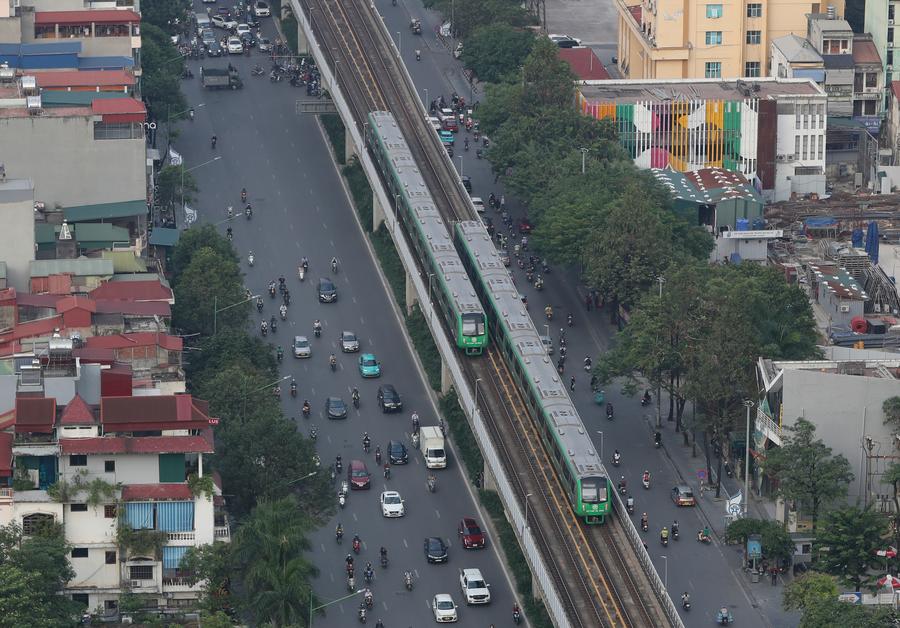 Trains run on the Cat Linh-Ha Dong urban elevated railway built by the China Railway Sixth Group in Hanoi, Vietnam, Oct. 9, 2024. (Xinhua/Yao Qilin)
Trains run on the Cat Linh-Ha Dong urban elevated railway built by the China Railway Sixth Group in Hanoi, Vietnam, Oct. 9, 2024. (Xinhua/Yao Qilin)
EMBRACING A SUSTAINABLE FUTURE
China would like to join forces with ASEAN to seize the opportunities of the new round of technological revolution and industrial transformation, said the Chinese premier at the 27th China-ASEAN Summit, highlighting cooperation potential in such areas as digital economy and green development.
In a recent seminar on the digital lifestyle and China-ASEAN cultural exchanges held in Malaysia, participants said digital cultural content is a key component of fostering people-to-people ties between China and the region. The recently held China-ASEAN Electronic Sports Industry Week also illustrated how digital platforms are bridging communities.
Zheng Xuefang, charge d'affaires of the Chinese Embassy in Malaysia, said that with increasing digital transformation and the advancement of the China-ASEAN comprehensive strategic partnership, the two sides will cooperate in the digital economy, adding strong impetus to consolidating regional connectivity.
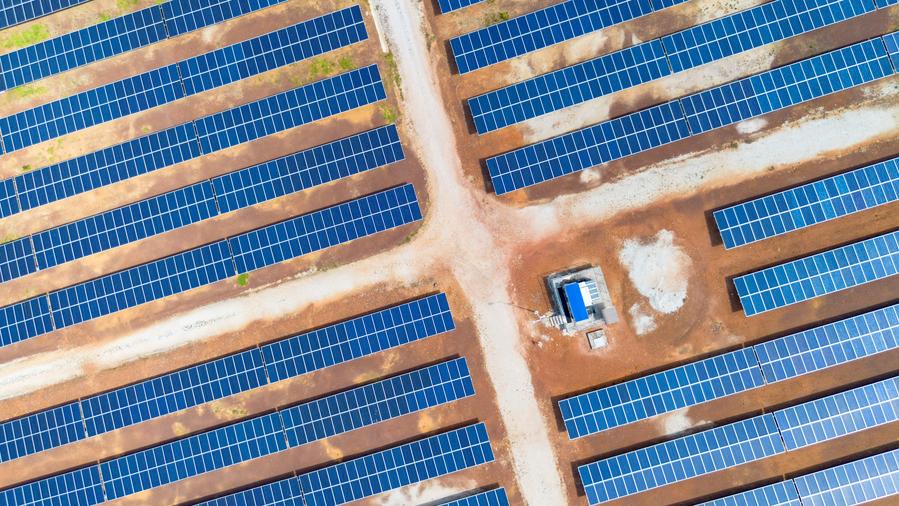 An aerial drone photo taken on June 6, 2024 shows a photovoltaic power station operated by Edra Power Holdings, a subsidiary of China General Nuclear Power Corporation, in Kuala Ketil, Malaysia. (Photo by Chong Voon Chung/Xinhua)
An aerial drone photo taken on June 6, 2024 shows a photovoltaic power station operated by Edra Power Holdings, a subsidiary of China General Nuclear Power Corporation, in Kuala Ketil, Malaysia. (Photo by Chong Voon Chung/Xinhua)
In green development, China and ASEAN have already engaged in extensive and fruitful cooperation.
In Thailand, a hydro-floating solar project jointly built by China and Thailand in the Sirindhorn Dam has shown its potential to serve as a pilot platform for energy transformation. In Malaysia, green energy cooperation between the two countries can be seen in small solar lighting facilities and a large-scale modern photovoltaic power station.
Wirun Phichaiwongphakdee, director of the Thailand-China Research Center of the BRI, said China's development outcomes and experiences in the fields of electric vehicles, clean energy, digital economy, and artificial intelligence have become key areas of focus in the BRI.
China is providing the world with more choices and growth momentum, said Phichaiwongphakdee.
(Video reporters: Tang Peipei, Qin Guanghua, Liang Shun, Huang Kaiying, Yu Jiaming, Zhang Yichi, Dong Shuo, Liu Siyuan; Video editors: Liu Ruoshi, Zak Zuzanna, Liu Xiaorui, Zheng Xin, Liang Wanshan.)■




 A single purchase
A single purchase








